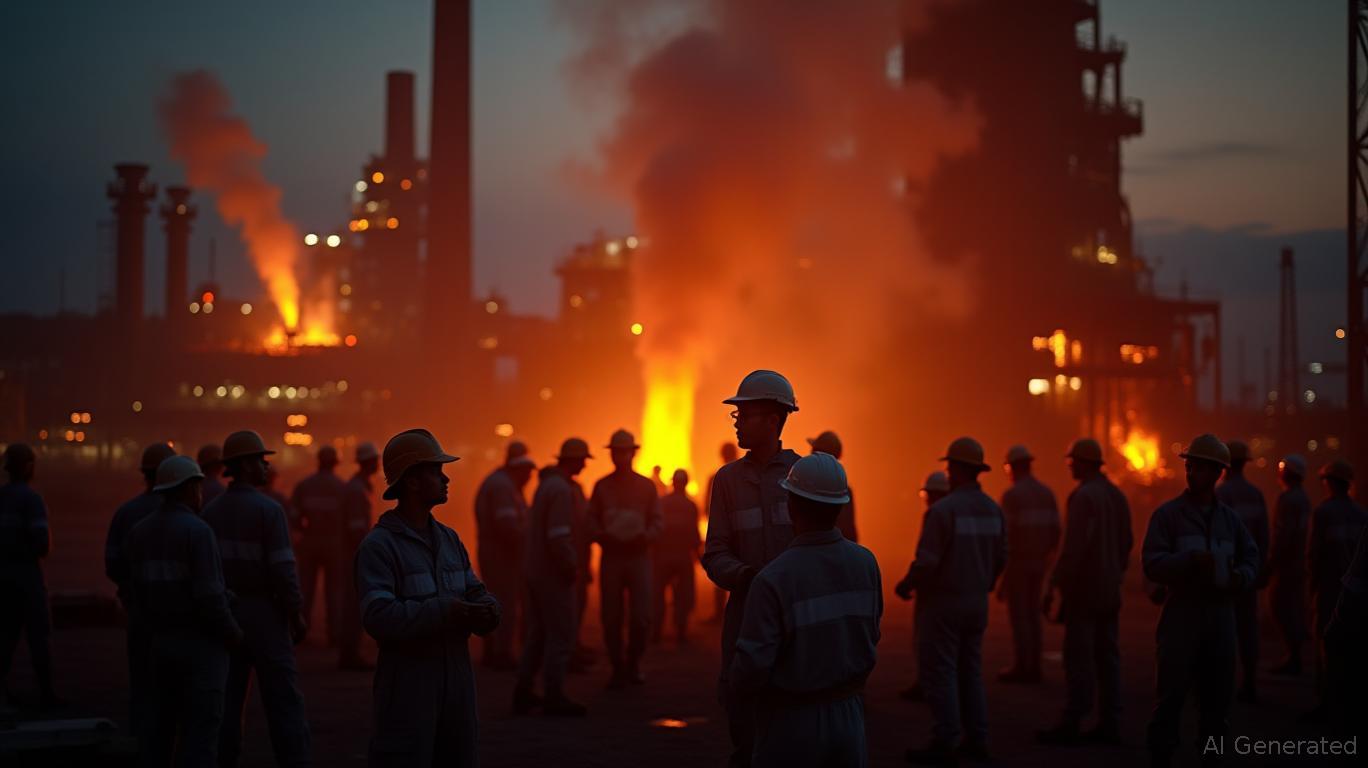Why Cleveland-Cliffs' Recent Slide May Signal a Structural Shift in Steel's Demand Cycle
The stock of
(CLF) has tumbled 14% over the past month, driven by its grim Q1 2025 results: a net loss of $1.18 billion and an 11.5% year-over-year revenue decline. Investors are now grappling with a pressing question: Is this drop a temporary stumble in a cyclical industry, or does it reflect deeper structural issues in the steel sector and Cleveland-Cliffs' competitive standing?
The immediate catalyst is clear—the company's Q1 performance underscored operational and financial strain. But to assess the sustainability of this decline, we must analyze two critical factors: the current phase of the steel demand cycle and Cleveland-Cliffs' ability to compete amid shifting industry dynamics.
The Steel Demand Cycle: A Perfect Storm of Headwinds
The steel industry is inherently cyclical, driven by construction, manufacturing, and automotive demand. Today, however, Cleveland-Cliffs faces a confluence of challenges:
- Elevated Interest Rates and Trade Disruptions: High borrowing costs have crimped capital spending in sectors like construction and infrastructure, while trade tensions—including tariffs and import surges—have eroded pricing power.
- Slowing Automotive Demand: Despite Cleveland-Cliffs' pivot toward automotive steel, U.S. vehicle sales are cooling. A would show how declining auto demand correlates with the company's revenue slump.
- Inventory Overhang and Weak Pricing: Steel mills are stuck with excess raw materials (e.g., iron ore) and finished products, pressuring margins. Cleveland-Cliffs' Q1 steelmaking segment posted a $400 million gross margin loss, highlighting this pain.
The broader steel sector's decline is evident: would likely show a strong correlation between falling steel prices and CLF's stock performance.
Cleveland-Cliffs' Competitive Position: A Struggle to Pivot
The company's troubles extend beyond cyclical factors. Its competitive positioning is weakened by:
- High Debt and Cost Inefficiencies: With $7.6 billion in long-term debt and a leverage ratio nearing 40x, Cleveland-Cliffs has less flexibility to invest in modernization. Its Q1 operating cash flow turned negative ($351 million outflow), signaling liquidity risks.
- Strategic Missteps and Operational Overreach: The Stelco acquisition, intended to boost scale, instead piled on debt. Meanwhile, underperforming assets like the Minorca mine and Steelton rail facility—now idled—reflect poor capital allocation.
- Loss of Market Share: Cleveland-Cliffs' automotive sales fell to 29% of revenue, down from historical highs, as rivals like Nucor (NUE) and ArcelorMittal (MT) poach customers. A would underscore this erosion.
The company's recent moves—idling six facilities to save $300 million and focusing on core automotive markets—aim to stabilize margins. However, these steps may not suffice in a demand-constrained environment.
Key Risks and Catalysts
- Legal and Regulatory Headwinds: Ongoing investigations into potential securities fraud add reputational and financial risk.
- Contract Termination Benefits: The planned end of its unprofitable slab contract with ArcelorMittal by late 2025 could add $500 million annually to EBITDA starting in 2026. A would illustrate this potential turnaround.
- Debt Refinancing: The company's $3.0 billion liquidity and $3.3 billion secured note capacity provide a near-term buffer, but refinancing high-cost debt in a tight credit market is a looming challenge.
Investment Takeaways: A Cyclical Recovery Won't Save Cleveland-Cliffs
While steel demand may rebound eventually, Cleveland-Cliffs' structural issues—high leverage, operational inefficiencies, and fading market share—suggest this decline is more than cyclical. The stock's current price of $8.61 remains below the $10.91 analyst consensus, but investors should ask:
- Is the company's cost-cutting and focus on automotive sufficient to outpace peers?
- Can it manage debt while navigating a potential recession?
For now, avoid CLF unless:
1. Steel prices stabilize or rebound due to infrastructure spending or trade policy shifts.
2. The company achieves its $50/ton cost reduction target and regains market share.
Until then, Cleveland-Cliffs' struggles reflect both a challenging industry cycle and its own strategic misalignment—a mix that demands caution.

Final Note: Steel investors should prioritize companies with strong balance sheets and exposure to niche markets (e.g., Nucor's mini-mills or U.S. Steel's (X) electric arc furnaces). Cleveland-Cliffs' turnaround hinges on more than just a cyclical upturn—it needs to prove it can compete in a post-pandemic, high-cost world.

Comments
No comments yet